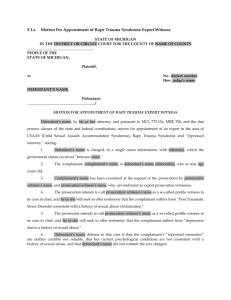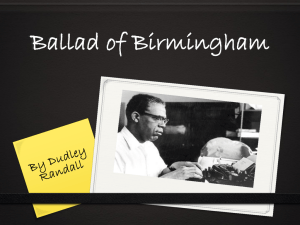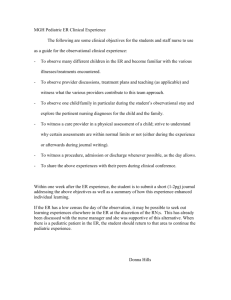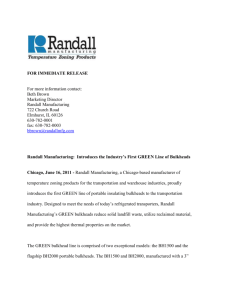trial activity worksheet
advertisement
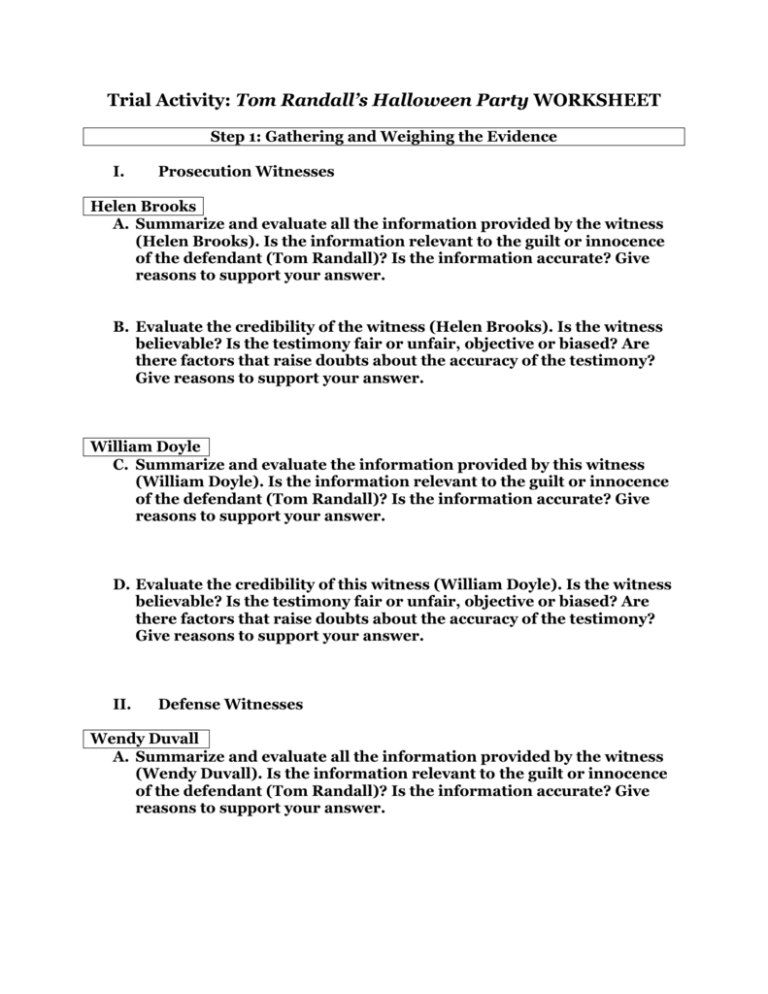
Trial Activity: Tom Randall’s Halloween Party WORKSHEET Step 1: Gathering and Weighing the Evidence I. Prosecution Witnesses Helen Brooks A. Summarize and evaluate all the information provided by the witness (Helen Brooks). Is the information relevant to the guilt or innocence of the defendant (Tom Randall)? Is the information accurate? Give reasons to support your answer. B. Evaluate the credibility of the witness (Helen Brooks). Is the witness believable? Is the testimony fair or unfair, objective or biased? Are there factors that raise doubts about the accuracy of the testimony? Give reasons to support your answer. William Doyle C. Summarize and evaluate the information provided by this witness (William Doyle). Is the information relevant to the guilt or innocence of the defendant (Tom Randall)? Is the information accurate? Give reasons to support your answer. D. Evaluate the credibility of this witness (William Doyle). Is the witness believable? Is the testimony fair or unfair, objective or biased? Are there factors that raise doubts about the accuracy of the testimony? Give reasons to support your answer. II. Defense Witnesses Wendy Duvall A. Summarize and evaluate all the information provided by the witness (Wendy Duvall). Is the information relevant to the guilt or innocence of the defendant (Tom Randall)? Is the information accurate? Give reasons to support your answer. B. Evaluate the credibility of the witness (Wendy Duvall). Is the witness believable? Is the testimony fair or unfair, objective or biased? Are there factors that raise doubts about the accuracy of the testimony? Give reasons to support your answer. Tom Randall C. Summarize and evaluate the information provided by this witness (Tom Randall). Is the information relevant to the guilt or innocence of the defendant (Tom Randall)? Is the information accurate? Give reasons to support your answer. D. Evaluate the credibility of this witness (Tom Randall). Is the witness believable? Is the testimony fair or unfair, objective or biased? Are there factors that raise doubts about the accuracy of the testimony? Give reasons to support your answer. Step 2: Asking Important Questions I. Imagine that you are the defense lawyer. List below important questions that you would want to ask the prosecution witnesses. Helen Brooks William Doyle II. Imagine that you are the prosecutor. List below important questions that you would want to ask the prosecution witnesses. Wendy Duvall Tom Randall Step 3: Constructing Knowledge 1. Do you believe that Tom Randall knew that Kelly Greene was a minor and that she was breaking the law by drinking alcohol? Explain the reasons for your conclusion. 2. Do you believe that Mr. Randall personally served Ms. Greene alcohol? Do you believe that he encouraged or forced her to drink alcohol? Explain the reasons for your conclusion. 3. Do you believe that Mr. Randall was aware that Ms. Greene was intoxicated when she left his party? Do you believe he knew—or should have known—she would be driving home? Explain the reasons for your conclusion. Step 4: Evaluating Expert Testimony I. Dr. Elizabeth Gonzalez (prosecution witness) A. Summarize Dr. Gonzalez's analysis of why Mr. Randall and Ms. Greene behaved the way they did. Identify the main reasons that support her conclusion. B. Evaluate the information provided by the witness (Dr. Gonzalez). Is the information relevant to the guilt or innocence of the defendant (Tom Randall)? Give reasons to support your answer. II. Dr. Richard Cutler (defense witness) C. Summarize Dr. Cutler's analysis of why Mr. Randall and Ms. Greene behaved the way they did. Identify the main reasons that support her conclusion. D. Evaluate the information provided by the witness (Dr. Cutler). Is the information relevant to the guilt or innocence of the defendant (Tom Randall)? Give reasons to support your answer. Step 5: Evaluating Summation Arguments I. Prosecution Summation A. Identify the key arguments used in the prosecution's summation. Then summarize the reasons and the conclusions for each argument. Argument 1 Reason Reason Conclusion Argument 2 Reason Reason Conclusion B. Evaluate the strength of the arguments you identified by assessing the truth of the reasons and the extent to which the conclusions follow logically from the reasons. Argument 1 Argument 2 II. Defense Summation C. Identify the key arguments used in the defense's summation. Then summarize the reasons and the conclusions for each argument. Argument 1 Reason Reason Conclusion Argument 2 Reason Reason Conclusion D. Evaluate the strength of the arguments you identified by assessing the truth of the reasons and the extent to which the conclusions follow logically from the reasons. Argument 1 Argument 2 Step 6: Deliberating the Issues REVIEW THE JUDGE’S INSTRUCTIONS TO THE JURY (no written answer) Step 7: Reaching A Verdict Based on your analysis of the evidence and arguments presented in this case, write your verdict and explain your reasons for reaching this conclusion. DO NOT NEED TO COMPLETE Step 8!!!!!!

